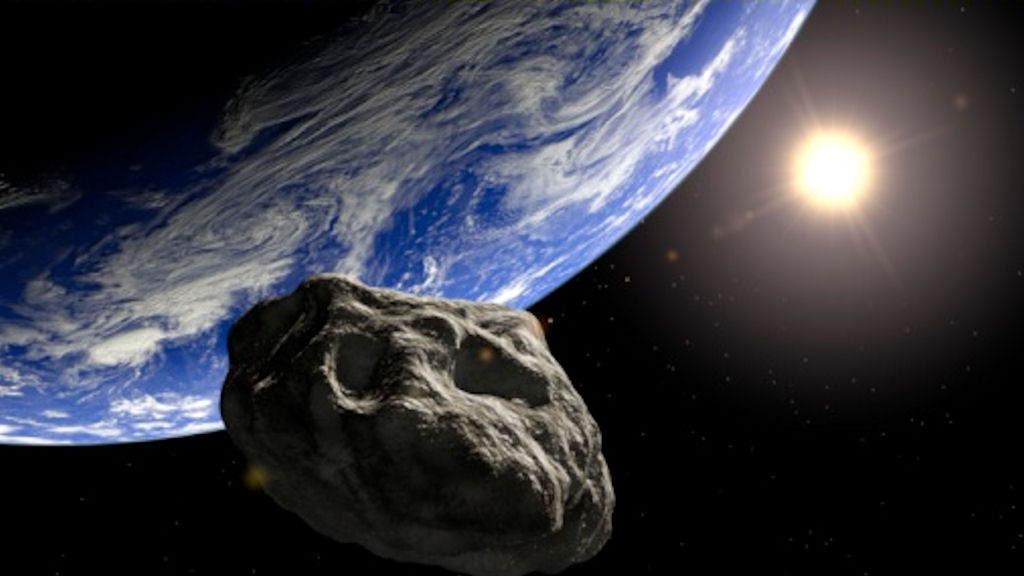Asteroid to fly past earth
An asteroid with the potential to destroy London is going to narrowly miss earth – by 27,700 km. But that’s close in space terms, as the UK Space Agency’s Professor Richard Crowther explains.

A small asteroid going by the name of 2012 DA14 will pass within about 27,700 km of the earth’s surface today, writes Professor Richard Crowther, Chief Engineer at the UK Space Agency.
First discovered by an observatory in southern Spain and thought to be about 45 metres in diameter, the asteroid will pass inside the orbits of our telecommunications satellites, located about 35,800 km above the equator. Its orbit about the sun can bring it no closer to the earth’s surface than 3.2 earth radii.
This means that it poses no risk of crashing into the earth. And the risk to our satellite infrastructure is limited, simply because it is travelling so fast and will spend so little time near the earth.
It poses no risk of crashing into the earth.
Asteroids are small, rocky bodies that have been left over from the formation of the planets 4.5 billion years ago. They are often known as “minor planets”.
There are thought to be billions of these chunks of rock with most of them residing in a doughnut-shaped “main belt” between the orbits of Mars and Jupiter. On the inner edge of this main belt, asteroids take about three years to orbit the sun. Those near the outer limit of the main belt take twice as long.
Some of the asteroids from the main belt have been nudged from their original orbits by a close encounter with Jupiter or a collision with other asteroids, bringing them to the inner solar system and sometimes close to earth.
Asteroids that pass close to earth are called near-earth objects (NEOs). They range in size from about 952 km in diameter, to bodies that are less than 1 km across.
Near earth objects
But how do we know where DA14 going and how do we predict its orbit? We monitor NEOs with telescopes and radar. By bouncing transmitted signals off objects, images and information can be derived from the echoes, such as the asteroid’s orbit, rotation, size, shape, and metal concentration. The UK Space Agency is a member of the UN Working Group on near earth objects – a group dedicated to developing an appropriate policy response to the NEO hazard.
In the past, we could only see the largest asteroids, but now we are slowly reducing size of objects we can observe from the ground. We need to find objects down to at least 100m, the vast majority of which we haven’t found yet. We need more observatories involved in refining orbits; a bit like joining the dots, the more dots (observation of position in sky) the easier it is to work out the shape of the orbit and whether the trajectory will cross the path of the earth and result in a collision.
Not visible to the naked eye, the asteroid will travel rapidly from the southern evening sky into the northern morning sky with its closest earth approach occurring about at 19:26 UTC. About four minutes after its earth close approach, there is a good chance it will pass into the earth’s shadow for about 18 minutes before reappearing from the eclipse.